
| Silky Jewel LUCIINI, THECLINAE, LYCAENIDAE, PAPILIONOIDEA | (donherbisonevans@yahoo.com) and Stella Crossley |
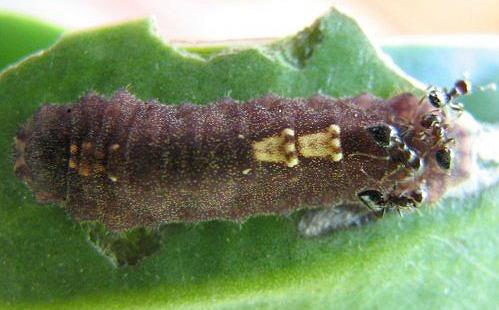
(Photo: courtesy of Bob Miller and Ian Hill)

| Silky Jewel LUCIINI, THECLINAE, LYCAENIDAE, PAPILIONOIDEA | (donherbisonevans@yahoo.com) and Stella Crossley |

(Photo: courtesy of Bob Miller and Ian Hill)
This Caterpillar is dark brown, hairy, and covered in tiny pale dots. It has orange marks on the thorax, and two characteristic pale triangular dorsal patches. It has flattened final abdominal segments. It is always attended by the small black ants :
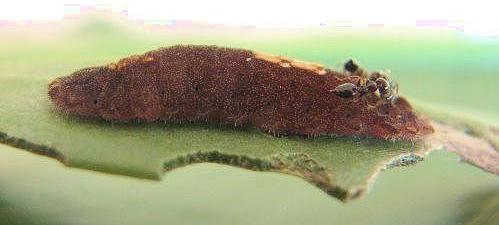
By day it hides in a curled leaf or under bark, and at night it emerges to feed. Its foodplant is any one of various species of Mistletoe ( LORANTHACEAE) including :
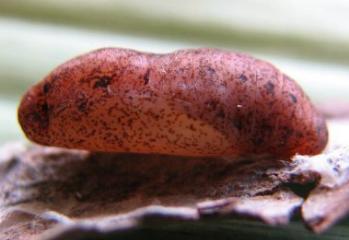
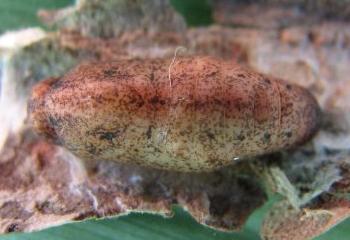
It pupates in a sheltered spot. The pupa is brown with a length of about 1.5 cms.
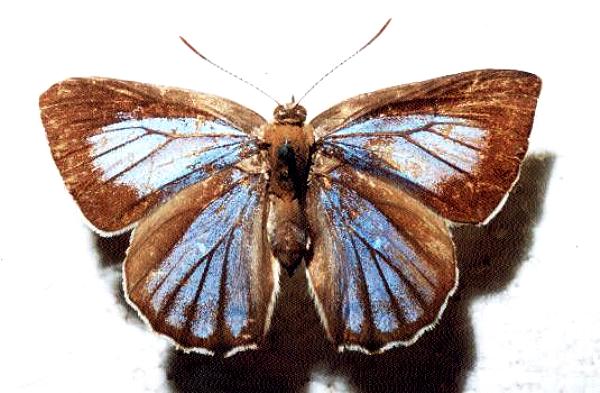
The adults are an iridescent turquoise on top, shading to black at the margins.
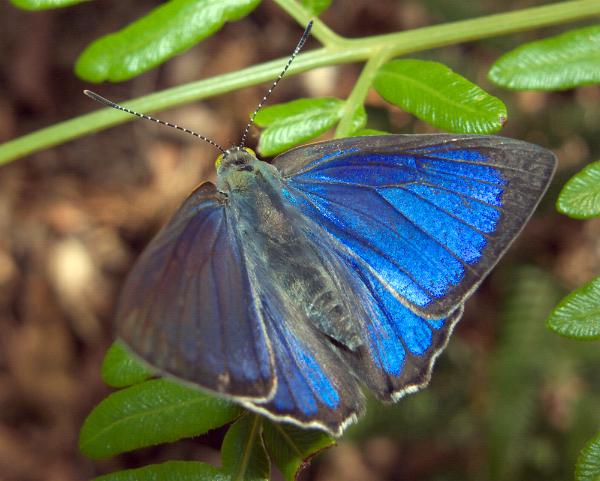
Underneath, they are pale brown with arcs of brown carets, and under the hindwing : rows of orange spots outlined in black and iridescent green. The butterflies have a wing span of about 3 cms.
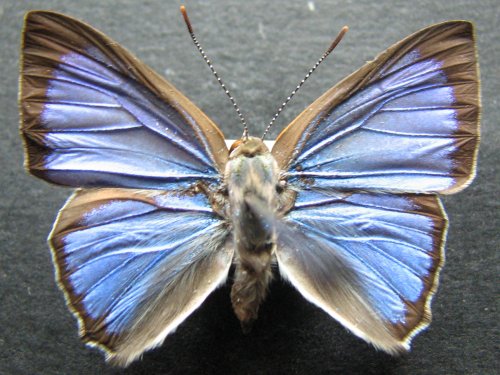
The eggs are white and flattened, with a width of about 0.7 mm. They are laid in small groups of one to six on or near a foodplant.
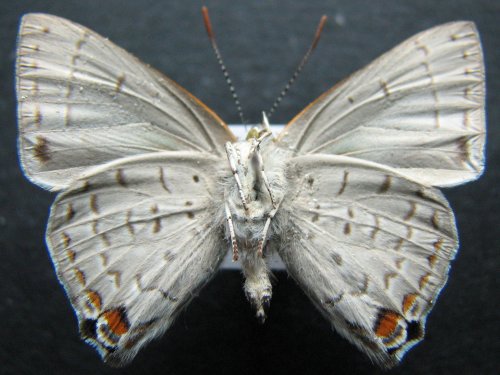
The species occurs in
and along the east coast of Australia in
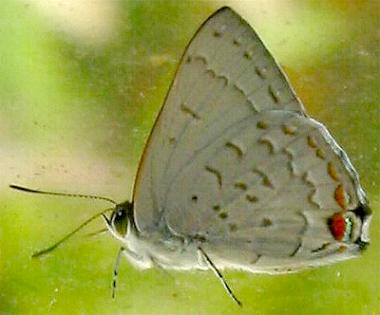
Further reading :
Michael F. Braby,
Butterflies of Australia,
CSIRO Publishing, Melbourne 2000, vol. 2, pp. 658-659.
Todd Burrows,
Life history notes on the Silky Jewel
Hypochrysops digglesii (Hewitson, 1874) Lepidoptera: Lycaenidae,
Butterflies and Other Invertebrates Club,
Metamorphosis Australia,
Issue 57 (June 2010), pp. 18-19.
L. Franzen,
Two rare butterflies,
Butterflies and Other Invertebrates Club,
Newsletter,
Issue 30 (September 2003), pp. 18-19.
William Chapman Hewitson,
Descriptions of New Species of Lycaenidae from his own Collection,
Transactions of the Entomological Society of London,
1874, Part 3, p. 344.
 caterpillar |  butterflies |  Lepidoptera |  moths |  caterpillar |
(updated 16 September 2010, 13 March 2025)